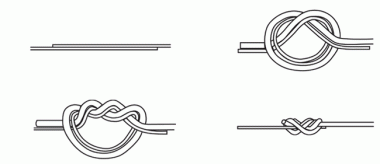
Easy angling in Oregon, Introduction
We've asked our fish biologists throughout the state to pick their favorite family fishing locations. These spots are great for novice and experienced anglers alike.

Table of contents
Part 1: Easy Angling Oregon - An Introduction (you are here)
Part 2: Easy Angling Oregon - Northwest Zone
Part 3: Easy Angling Oregon - Southwest Zone
Part 4: Easy Angling Oregon - Willamette Zone
Part 5: Easy Angling Oregon - Central Zone
Part 6: Easy Angling Oregon - Southeast Zone
Part 7: Easy Angling Oregon - Northeast Zone
101 great places for families to fish in Oregon
The rivers, lakes, ponds and streams highlighted in the Easy Angling Oregon articles have been selected with families and beginning anglers in mind. Whether you want to try fishing for trout, bass, bluegill, salmon or steelhead, there’s a place to get started.
Besides offering a representative sampling of the state’s fishing and scenic variety, these locations generally:
- Offer good odds of catching a fish using simple fishing techniques.
- Have easy-to-understand fishing regulations.
- Are easily accessible by family car.
- Have some comfort facilities available (such as toilets, picnic tables).
We’ve organized these fishing locations into six geographic zones that correspond to the zones in the Oregon Sport Fishing Regulations. You can focus your attention on places close to home, or plan a weekend getaway or vacation to new part of the state.
What you'll need
- A fishing license.
- A rod and reel.
- Tackle.
Types of rods and reels
Spincasting
This is the simplest gear to master and is used frequently by beginners. It’s easily recognized by the closed reel face. When casting the angler needs to push down on a button with his or her thumb in order to release the line. These outfits minimize tangles. Spincast outfits are best-suited to casting small and medium sized lures to smaller fish.
Spinning
An angler can cast farther with this kind of outfit than with spincast gear, but the exposed fishing line makes it easier to get tangles while casting. Spinning outfits come in a variety of sizes and weights. Smaller outfits can cast small lures to trout, while larger outfits are excellent for casting large lures to salmon and steelhead.
Baitcasting
These outfits excel at casting heavy lures a long way. Their built-in options give you a lot of control, however, can make them difficult to learn to cast. These outfits work well when fishing off-shore or in very deep waters, or when pursuing large fish like salmon or sturgeon.
Fly-fishing
This gear is very different because it’s designed to cast a virtually weightless lure (flies are often tied with little more than fur and feathers) unlike the heavy plastic or metal lures used in spinning or baitcasting fishing. This kind of fishing requires more highly specialized gear and techniques, but many anglers find mastering these techniques almost as rewarding as catching the fish.
Suggested tackle
The list of necessary fishing gear and equipment can be very simple. A rod and reel, and a small selection of lures, bait hooks, bobbers and artificial bait is enough to go fishing just about anywhere you could find fish.
A good shopping list to get started might include:
- A lightweight 5-6 foot spincasting or spinning rod with matching reel and 4- to 6-pound monofilament line.
- Package of size 8 bait hooks.
- Couple of small plastic bobbers.
- Jar of PowerBait or PowerEggs.
- A package of #5 non-lead split shot.
- Worms.
- A handful of 1/16 oz. spinners.
Fly-fishing is another popular way to fish. It requires more specialized equipment and tools, but a good starter outfit could include:
- Graphite 5-weight fly rod, nine feet long.
- Matching fly reel.
- Weight forward, 5-weight fly line.
- Tapered monofilament leaders, 4X 7.5 feet long.
- Spools of 4X and 5X tippet.
- Assortment of flies (check the local shop for what's working)
- Assorted streamside tools.
Knots to know
Fishing knots allow you to properly tie your line to your hook, lure, and other tackle. These knots are easy to tie and are especially good for nylon monofilament, the most commonly used line for all fishing. Remember to wet knots with saliva as you pull them tight. This prevents damage to the line and allows the knot to pull tight.
Palomar knot
The easiest to tie, a good choice to hold terminal tackle (hooks, swivels and lures).
Improved clinch knot
A universally known knot also called the fisherman’s knot.
Surgeon’s knot
Used to join two lines (one short) together.








